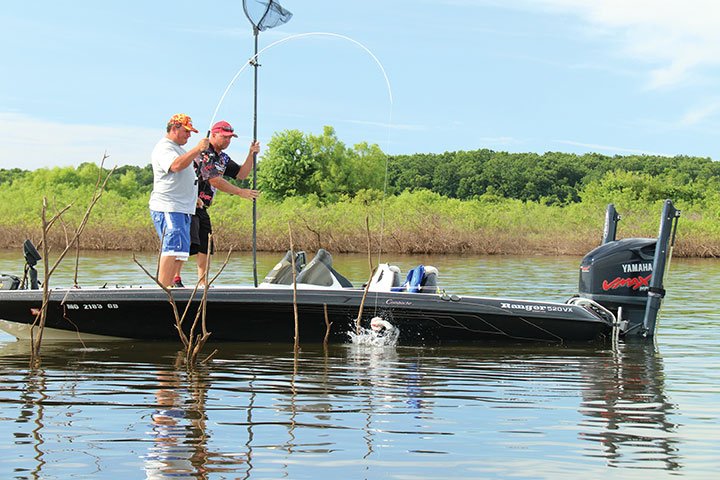Finding fish is the most difficult part of fishing. The best fishermen in the region can’t catch crappie if they won’t bite. Weather and water conditions are often the culprit. However, sometimes the fish are biting and some fishermen can’t find them. There are no magic guarantees, but using logical steps provides a good chance of finding them.
Step One: Pre-trip information. Experts agree that unfamilar lakes can be difficult so getting the most information possible, before heading to the water, is very important. The same is true if it has been a while since fishing home waters.
Start with an on-line search. Fishing reports, lake conditions and other important facts are often available. Pay particular attention to the depth of crappie and areas of the lake that are hot. Knowing the best technique and baits can help, too.
Baitshops, marinas and fishermen are sources of information, but remember not all information you receive will be accurate.
Step Two: Pick one area of the lake. Former classic champ David Stancil says, “Realize you can’t fish a whole lake. Get pre-trip information so you can look at a map to find a potential area to try. You’ve got to stay in one area where there are fish and figure out how to catch them.”
Bass fishing legend, Rick Clunn, agrees, no matter what species. “When fishing a new lake you need to simplify. You were probably fishing a pond when you first started fishing. It’s a small body of water. In a pond the fish are contained and you know they will be there. Going to a big lake is different.
“On a large lake there are two main steps. The number one step is locating them. The second step is figuring out how to catch them.”
Step Three: Game plan. Stancil says, “Have a plan. Figure out what you need to try and then stick with it. It might include fishing one arm of the lake, trying two different techniques in a variety of depths. Stick with your plan instead of hopping all over the lake.”
Tournament fisherman Bruno Perotti says, “Make a plan and then spend time on the water. Do as much fishing as possible because it usually takes work to find and catch fish in normal or tough conditions. Nothing takes the place of having a pole in the water and learning what the fish are doing.”
Step Four: Eliminate water and form a pattern. BnM Pole pro staff manager, Kent Driscoll, fishes tournaments in many different waters. He says, “Things have changed a lot over the years but the key is still finding fish is spending some time and figuring out a pattern. To me, it’s a matter of paying attention to details. Try different tactics. Try spider rigging one day and power trolling the next, whatever techniques you do and believe will work.
“Pre-trip information is important with elimination of water being the key. If information says the fish are in the creeks, try one creek arm today and another one tomorrow. Eliminate water until you find the fish. Once found, techniques can be fine-tuned.
“Some fishermen are intimidated by a new lake but shouldn’t be. Consider it a challenge and enjoy the adventure of finding them. The more time you spend on the water working for fish the better fisherman you become. It feels great at the end of the day when you’ve done your homework and all the pieces of the puzzle come together.”
Step Five: Keep an open mind. Kentucky Lake guide and legend, Jim Perry, says, “Overall experience is very important. So is time on the water. But stay open to different things, even on your home lake. I’ve seen it many times where locals have a tendency to follow the same pattern time after time. Newcomers, like during tournaments, will come in, try different places and catch more and bigger fish than the locals.
“Learning new spots on home waters can be difficult just because of old habits. Work to find new spots and covers to give you more opportunities.”
Step Six: Electronics are critical. Follow a tournament trail and you’ll quickly learn that fishermen spend a lot of time using electronics only; poles are in the boat. Using electronics to find potential spots and to find fish is more time-effective than dropping a bait in the water and then watching electronics.
A modern fisherman needs a graph with sonar and mapping. Both are essential. Today’s electronics, even the smaller less expensive units, are very good quality. Upgrading to side imaging, and other high-tech options, reduces search time, but the units require a larger billfold and they have a learning curve.
Going on a family vacation requires pre-trip information, a map and a plan. You get to your destination and you may have to tweak a thing or two to maximize your time and fun. It’s the same with fishing. Pre-trip info, map and following a plan can lead to a pattern, success and fun.
Editor’s note: Tim Huffman’s new book, Limiting Out for Crappie, can be found at Amazon.com and Grizzly Jig Co.



